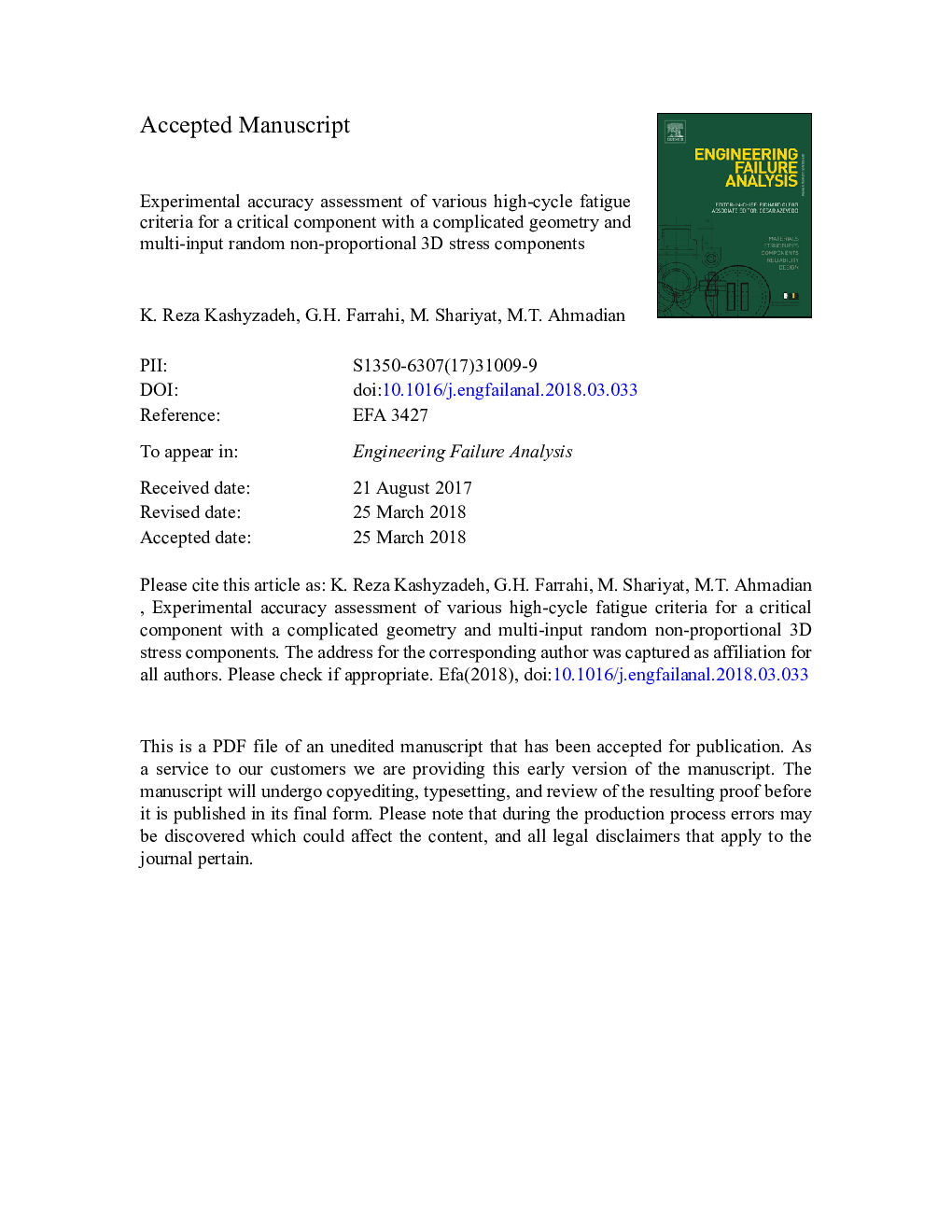| Article ID | Journal | Published Year | Pages | File Type |
|---|---|---|---|---|
| 7167405 | Engineering Failure Analysis | 2018 | 36 Pages |
Abstract
In the present paper, a steering knuckle of a passenger car that serves as a highly critical component from the safety point of view, is considered to evaluate accuracy some of categories of the multiaxial fatigue criteria, through comparing their predictions with the experimental results. This component is subjected to the highest road- and steering-induced random and non-proportional loads that are exerted on several points of the component. The mechanical properties and fatigue strengths are determined experimentally and the fatigue life assessment tests are performed by the authors. Quantometric analyses and scanning electron microscope (SEM) have been employed to detect the failure surface of the test samples. The theoretical multiaxial fatigue life assessment of the steering knuckle has been fulfilled based on a special algorithm using the concept of cycle counting of the time history of the equivalent fatigue stresses even for fatigue criteria that have been proposed for checking the fatigue strength and not the fatigue life. Comparing the theoretical results with the experimental one reveals that the simple calibrated static-based failure criteria or linear critical-plane-type ones (e.g., von Mises, Carpinetri-Spagnoli, Findley, McDiarmid, and Dang Van) are not reliable in the very complicated situations. Furthermore, criteria using Drucker-Prager-type modifications, i.e., the regular Shariyat, Liu-Zener and especially, the Energy-based instant fatigue damage tracing proposed by Shariyat criteria (the later one, account for not only different means of the stress components but also their quite different individual frequencies and phase shifts) lead to the highest accuracies.
Related Topics
Physical Sciences and Engineering
Engineering
Industrial and Manufacturing Engineering
Authors
K. Reza Kashyzadeh, G.H. Farrahi, M. Shariyat, M.T. Ahmadian,
